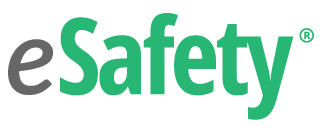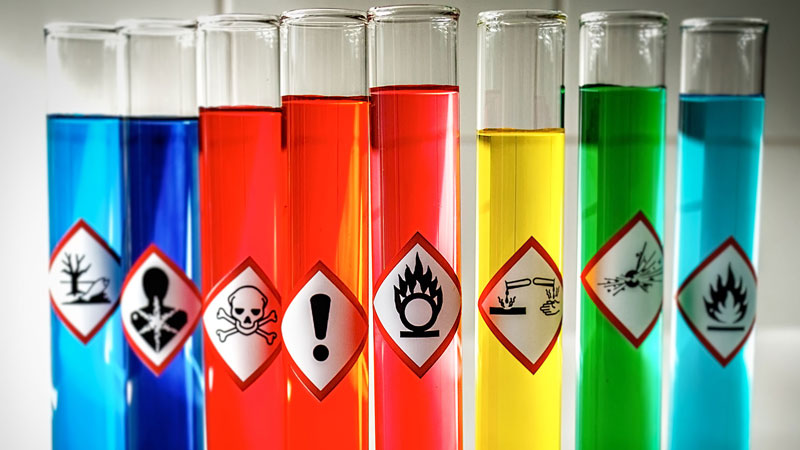The essential goal of hazard communication is to ensure that anyone coming into contact with a hazardous chemical has the reliable, practical, and comprehensible information they need to take effective preventative and protective measures for their health and safety. OSHA’s latest update to the Hazard Communication Standard is another step to providing more comprehensive, easy-to-follow information regarding the hazards of chemicals. By aligning with the United Nations’ Globally Harmonized System of Classification and Labeling of Chemicals (GHS), OSHA is working to improve the quality and consistency of chemical classification and labeling, with the goal of enhancing worker comprehension.
An essential component of this updated Hazard Communication Standard is properly labeling hazardous chemicals. There are two types of required labels:
- Primary container labeling. Labels on containers received from the manufacturer.
- Secondary container labeling. Labels on containers that hold chemicals transferred from a primary container.
In this article, we will cover the GHS label requirements for shipping or primary container labeling. If you’d like to learn more about workplace or secondary container labeling, navigate to eSafety’s Toolbox Talk on Workplace Container Labeling.
There are six GHS label requirements for any shipping container. Let’s take a look at each of those requirements, as well as any supplemental information you may include on a GHS shipping label.
01. Product Name or Identifiers
This part of the GHS shipping label identifies the hazardous chemical. According to OSHA, this can be (but is not limited to) the chemical name, the code number, batch name, or any other appropriate product identifier according to the manufacturer, importer, or distributor.
02. Signal Word
A signal word is an important GHS label requirement. There are only two words used as signal words: “Danger,” and “Warning.” They are used to convey to the reader the level of severity of the hazard within the container.
- Danger is used for the most severe hazards.
- Warning is used for less severe hazards.
No matter how many hazards a chemical may have, there will only be one signal warning on the GHS shipping label. If there are multiple hazards within a product, the signal word should correspond to the most severe hazard.
For example, if one of the hazards within a chemical warrants a Danger signal word, while another warrants a Warning signal word, then only Danger should appear on the label.
03. Hazard Pictograms
Previously known as “symbols”, GHS hazard pictograms are identified by a red diamond border and black symbols on a white background. Pictograms are designed to provide a universal, at-a-glance hazard identification method. There are 9 pictograms associated with 29 hazard classes, each identifying risks in three different categories:
- Chemical/physical
- Health
- Environmental
Please note that OSHA only enforces 8 of these 9 pictograms. OSHA states that the environmental pictogram is not necessary, but may be used to provide additional information on a shipping label.
The GHS pictograms are as follows:
Health Hazards
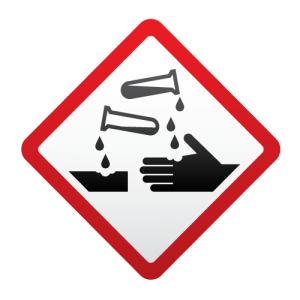
Corrosion
Represents skin corrosion and eye effects.
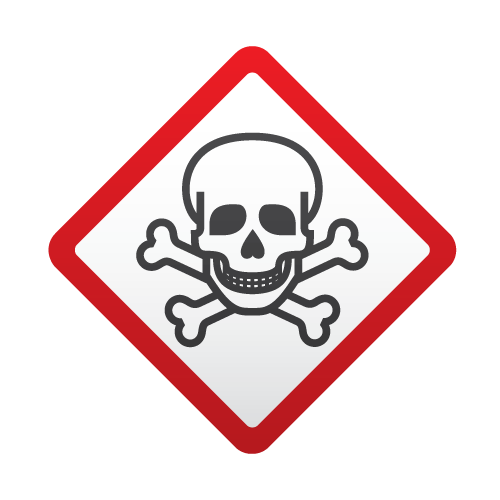
Skull-and-Crossbones
Represents Severe Acute Toxicity
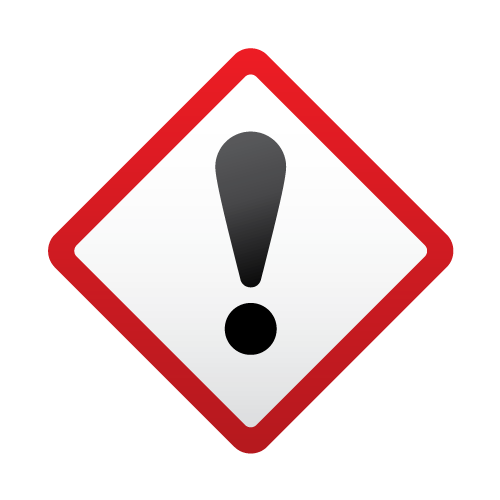
Exclamation Mark
Skin and eye irritants, skin sensitizer, harmful acute toxicity, narcotic effects, and respiratory tract irritant
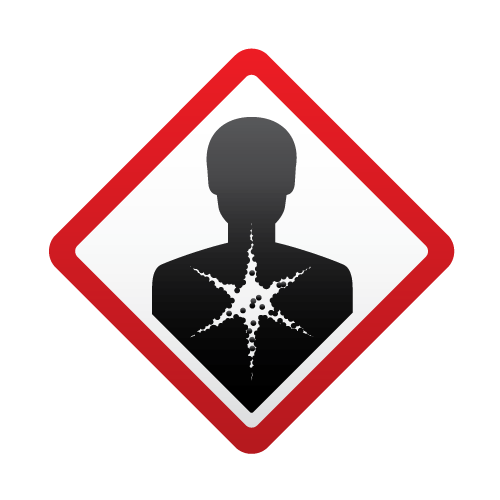
Health Hazard
Represents carcinogen, mutagenicity, reproductive toxicity, respiratory sensitizer, target organ toxicity, aspiration toxicity
Physical Hazards
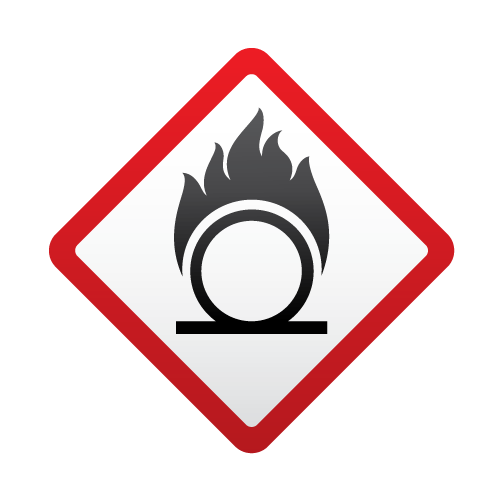
Flame-Over-Circle
Oxidizers
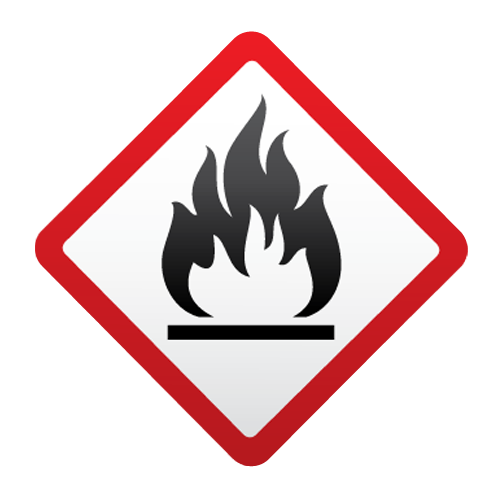
Flame Pictogram
Flammables, including gases, aerosols, liquids, and solids; Pyrophorics, including liquids, solids, and gases; Self-heating substances, emits flammable gas when in contact with water and organic peroxides.
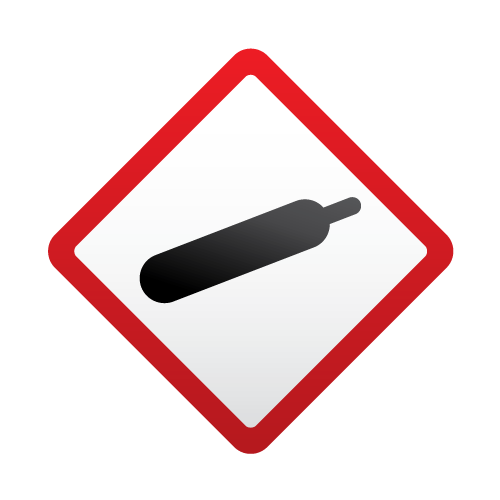
Gas Cylinder
Gases under pressure
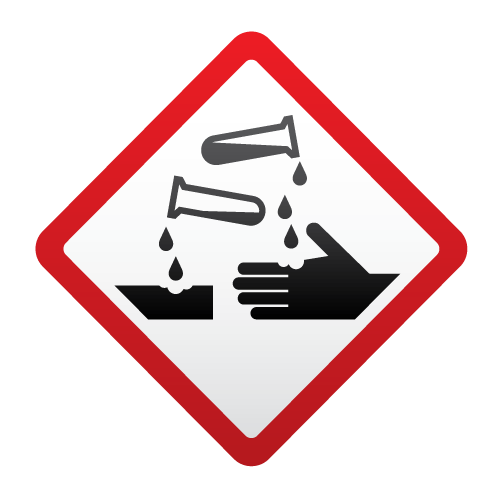
Corrosion
Corrosive to metals. This pictogram is the only one associated with both physical health hazards.
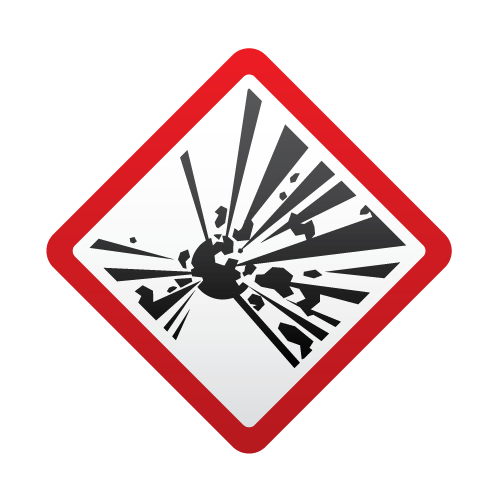
Exploding Bomb
Explosives, self-reactives, and organic peroxides
Environmental Hazards
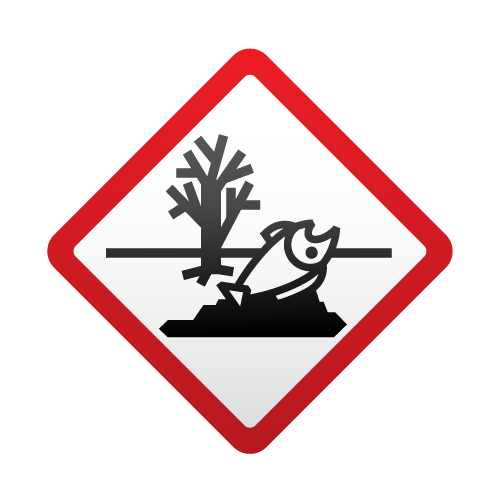
The final class of hazards is the environmental hazards, represented by the environmental pictogram. As mentioned above, these classes are not regulated by OSHA but may be required by other governing agencies.
04. Hazard Statements
Hazard statements explain the nature of the hazardous product within the container, as well as the degree of hazard.
An example of a health hazard statement would be, “Causes damage to kidneys through prolonged or repeated exposure when absorbed through the skin.”
These statements are standardized, which means they may not deviate from the language or elements provided for each hazard class and category. A chemical user should always see the same statement for the same hazard, no matter the chemical, the manufacturer, importer, or producer.
05. Precautionary Statements
Precautionary statements describe how to appropriately handle the hazardous chemical to minimize or prevent adverse effects. There are four types of precautionary statements:
- Prevention. To minimize exposure to the hazardous chemical
- Response. To appropriately respond and provide first-aid in the case of accidental spillage or exposure
- Storage. To ensure proper storage of hazardous chemical
- Disposal. To ensure the safe disposal of the hazardous chemical
Precautionary statements may be combined on the GHS label to save on space and improve readability. If a chemical is classified for a number of hazards, you must ensure that the most stringent precautionary statements are included on the label.
06. Supplier Information
The label must include the name, address, and telephone number of the manufacturer or supplier responsible for the product.
07. Supplemental Information
Supplemental information is not a GHS label requirement, but an optional component. Supplemental information may be used to provide further detail about the hazardous chemical, so long as it does not contradict or cast doubt on the validity of the standardized hazard information.
This section of the GHS label is designed to provide any information that may be required by a Competent Authority or any information provided at the discretion of the manufacturer or distributor. It may also be used to provide information about hazards not yet incorporated into the GHS.
GHS does provide guidance for supplemental information on shipping labels to ensure that there is not a wide range of variation in information, and to ensure that supplemental information does not undermine GHS label information in any way.
GHS label requirements provide a standardized method of hazard communication for shipping containers. Each of the requirements of a GHS label helps inform workers how best to approach and safely handle hazardous chemicals. If you have more questions about label requirements or hazard communication, you can learn more at eSafety’s two-part Hazard Communication safety training course.
